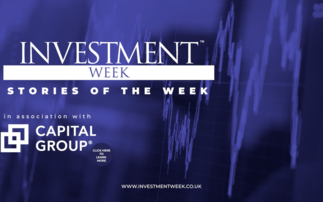If we look back over recent history, equity markets have tended to move in decadal mega cycles, where one major ‘theme' has dominated market returns.
In the 1970s, energy and commodity companies were dominant, followed by the rise of computing, personal electronics and mobile communications in the 1980s and 1990s. In the 2000s, we saw the growth of global trade driven by emerging markets and China, while digital innovators and scalable internet platforms have dominated since the 2010s.
A large proportion of equity returns over the last 10 to 15 years has come from beneficiaries of lower interest rates, leading to extremely narrow market leadership from a handful of asset-light, US-domiciled, mega-cap technology platforms.
However, we believe we have moved into a different market cycle; one marked by structurally higher interest rates, more volatile inflation and elevated geopolitical tensions.
But while change is the norm in the global economy, what is particularly unique – and exciting for investors – about this current point in time is that there appears to be a confluence of several transformational and multi-generational shifts occurring simultaneously.
We currently see three areas of major change and our focus is on identifying the potential long-term investment opportunities arising from them.
1. Disruptive force of artificial intelligence (AI)
As investors, one of the most attractive features of AI is that its ultimate addressable market is potentially limitless, due to its pervasiveness across so many parts of the economy. However, it is critical to separate short-term hype from longer-term investment opportunity. We are therefore currently trying to determine the potential implications of AI, understand what factors may accelerate or decelerate pace of adoption, and think about a potential investment approach for the present and longer term.
We arrived at an AI investment framework that focuses on the following areas: compute (semiconductors, or the ‘brains' of AI), infrastructure (cloud hyperscalers, data centres and networks, which provide the ‘plumbing'), AI model developers, software applications (embedding AI into software and charging a recurring premium), and finally the real-life and end-industry beneficiaries.
Given the multi-faceted nature of the AI ecosystem, there is no single ‘correct' way to map out the investable opportunity set. However, an investment framework can help to define the near and long-term opportunities.
2. ‘Third wave' of health care innovation
The first wave of innovation was largely about chemistry − simple compounds and small molecule drugs created in labs − that could address everyday sicknesses and illnesses. The second wave moved from primarily inorganic chemistry to organic − involving large molecules or protein-based therapies, tackling more complex diseases including diabetes, cancers, immune deficiencies and blood clotting.
Now we are at the beginning of the third wave − the genetic era − that could be transformative for health care. Breakthroughs are enabling a deeper understanding of genetics and leading to the creation of highly targeted interventions to tackle a wide range of genetic disorders. Examples of these treatments include RNA interference (RNAi), gene therapy and gene editing.
The confluence of these new technologies and the pace of innovation is paving the way for novel treatments that could address major, but largely untreated, illnesses worldwide such as cancer, obesity and cognitive impairment. As development progresses, these innovative treatments could have profound implications on global life expectancy and quality of living.
3. Industrial renaissance
For much of the past 15 years, characterised by ultra-low interest rates, investors have focused on ‘growth' companies and largely ignored more cyclical old-economy industrial businesses that make physical things. However, signs are emerging of an ‘industrial renaissance' driven by several multi-year trends.
These trends include the energy transition, energy security, the buildout of data centres, rising defence spending amid a heightened geopolitical risk environment, and the desire to reconfigure global supply chains.
Essentially, old-economy cyclical manufacturers could become critical enablers of our future economy and, in doing so, transform themselves into secular growth companies.
Looking forward, we expect these powerful forces to drive broader market leadership and a much richer, more diverse set of investment opportunities over the next decade and beyond. That does not mean certain technology-focused stocks cannot continue to do well but they may be joined by additional companies in other sectors and regions.











